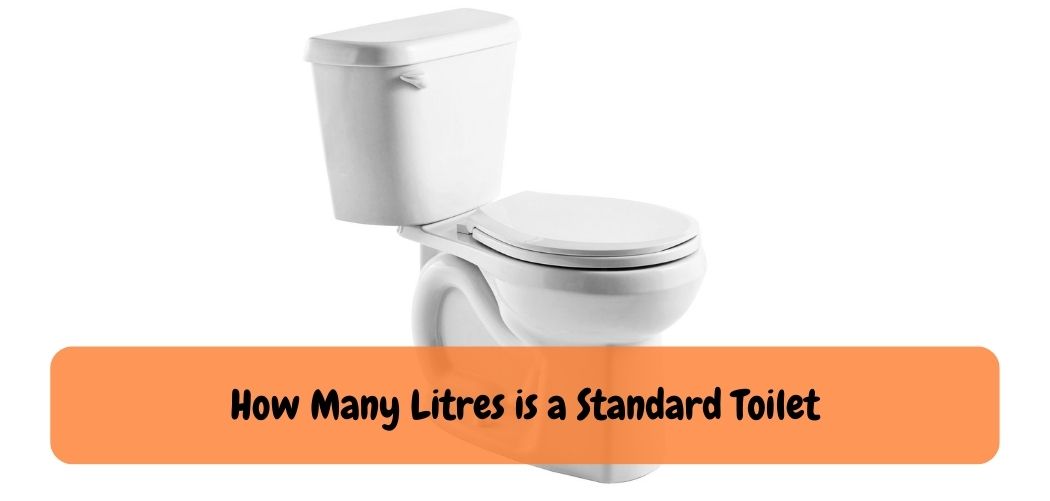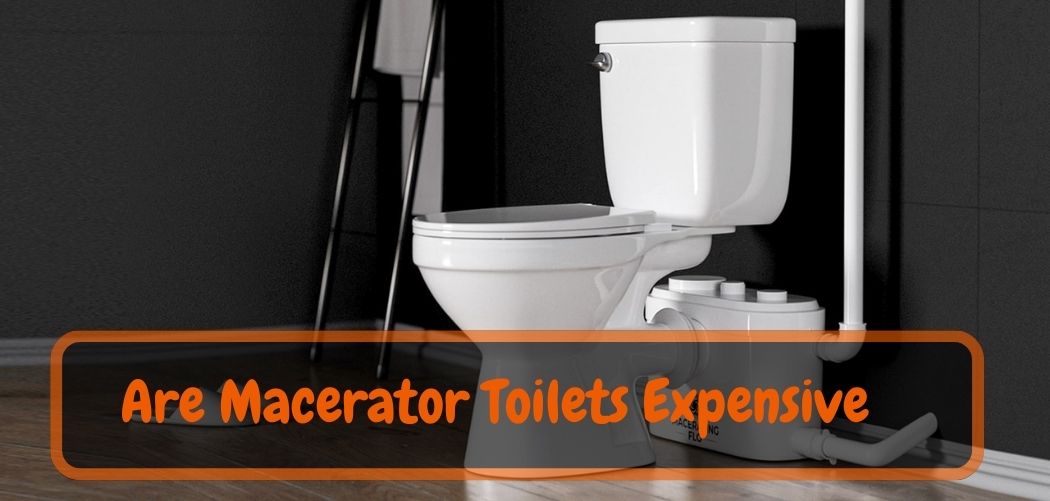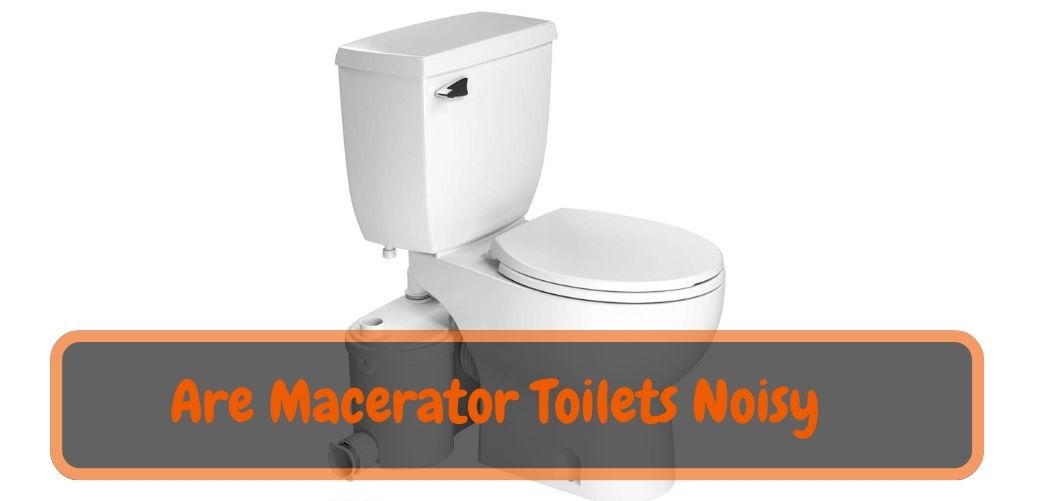When it comes to our everyday routines, the role of a toilet is paramount. While most of us use toilets multiple times a day without giving it much thought, have you ever wondered how much water is required for a standard toilet flush?
The answer lies in the measurement of liters, a unit commonly used to quantify liquid volumes. Understanding the water usage of a standard toilet can shed light on environmental concerns, conservation efforts, and the development of more efficient systems.
In this article, we will explore the typical water capacity of a standard toilet, the variations that exist, and the importance of water conservation in the context of toilet usage.
By delving into these aspects, we can gain a deeper appreciation for the engineering behind this essential fixture and the steps we can take to promote sustainability in our everyday lives.
The Guide For: Many Litres is a Standard Toilet
Toilets are an essential part of our daily lives, and understanding their water usage is crucial for promoting water conservation and sustainable practices. In this guide, we will explore the average water capacity of a standard toilet, factors that affect water usage, and ways to reduce water consumption. By gaining insight into these aspects, you can make informed decisions and contribute to a more environmentally-friendly approach to toilet usage.
1. The Average Water Capacity of a Standard Toilet:
The water capacity of a standard toilet refers to the amount of water used for each flush. While variations exist depending on factors such as location, regulations, and technological advancements, the average water usage for a standard toilet flush ranges between 6 to 9 liters (1.6 to 2.4 gallons). It’s important to note that older toilet models might have higher water consumption compared to newer, more efficient options.
2. Factors Affecting Water Usage:
Several factors influence the amount of water consumed during a toilet flush. These factors include:
a. Flush Volume: The volume of water released during a single flush greatly affects water consumption. Traditional toilets typically have a single flush mechanism that uses a fixed amount of water per flush, resulting in higher water usage. However, newer models incorporate dual-flush systems, offering a choice between a smaller flush for liquid waste and a larger flush for solid waste, reducing water consumption.
b. Flush Mechanism: The type of flush mechanism also affects water usage. Gravity-fed toilets, which rely on the force of gravity to flush waste, generally use more water compared to pressure-assisted toilets that utilize compressed air to enhance flushing power.
c. Toilet Design and Efficiency: Modern toilet designs and technologies aim to maximize efficiency and reduce water consumption. Low-flow toilets, for example, are designed to use significantly less water per flush while maintaining effective waste removal.
3. Reducing Water Consumption:
Conserving water in the bathroom, particularly in toilets, is crucial for sustainable living. Here are some tips to reduce water consumption:
a. Upgrade to Low-Flow Toilets: Consider replacing older, water-intensive toilets with low-flow models. These toilets are designed to use around 4.8 to 6 liters (1.28 to 1.6 gallons) of water per flush, significantly reducing water usage.
b. Install Dual-Flush Systems: If replacing your toilet is not an option, consider installing a dual-flush system. This mechanism allows you to choose between a partial flush for liquid waste (around 3 to 4 liters or 0.8 to 1 gallon) and a full flush for solid waste (around 6 to 9 liters or 1.6 to 2.4 gallons).
c. Regular Maintenance: Ensure that your toilet is functioning optimally by checking for leaks and addressing them promptly. A leaking toilet can waste a substantial amount of water over time.
d. Practice Responsible Flushing Habits: Only flush when necessary and avoid using the toilet as a waste bin for items that should be disposed of separately. Proper waste disposal can significantly reduce unnecessary flushes and conserve water.
How Many Litres is a Full Toilet Flush?
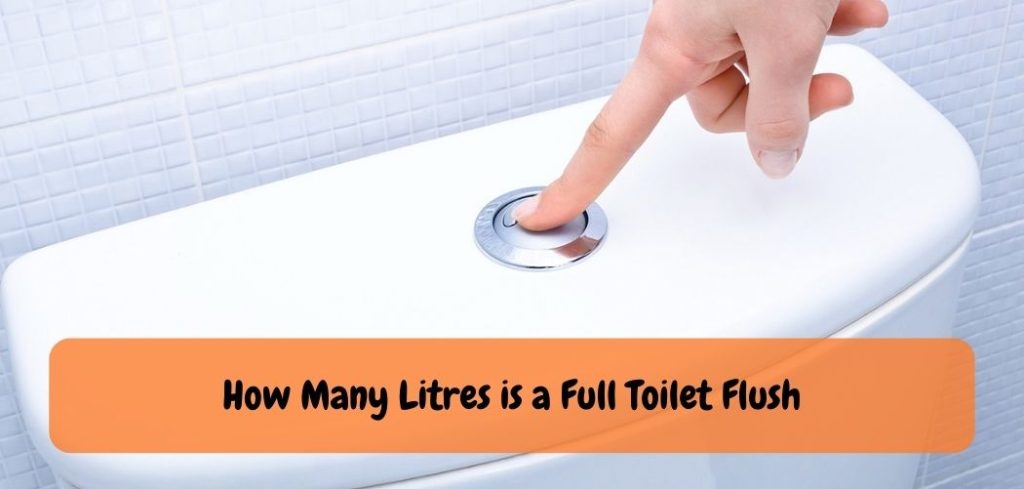
The amount of water used in a full flush of a toilet can vary greatly depending on the type and age of the toilet. Generally speaking, a single flush usually uses between 6 and 7 liters per flush (Lpf). Older toilets may use up to 13 Lpf while newer high-efficiency models only use 1.6 – 4 Lpf.
In addition, dual-flush toilets allow you to choose between two different flushes – one for liquid waste that uses less water than a full flush. The majority of homes with older toilets could save substantial amounts of water every year by replacing their current model with an energy efficient low-volume model or even installing a dual-flush system.
AlsoRead: Why are American And European Toilets Different?
How Many Liters is a Toilet Tank?
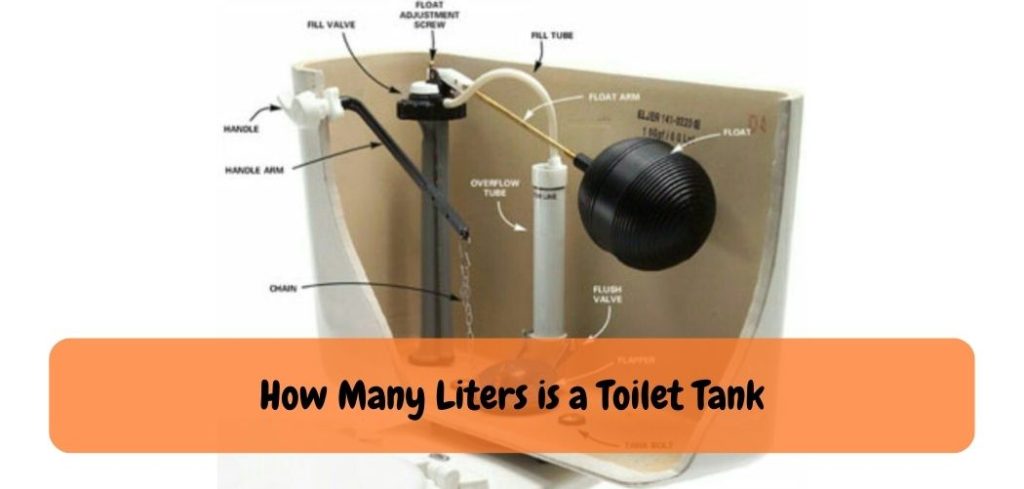
The size of a toilet tank can vary from model to model, but generally speaking, the standard water capacity for most residential toilet tanks is approximately 6 liters. This amount of water typically allows for one full flush cycle and helps keep the system functioning properly.
Toilets with larger tanks – sometimes referred to as “high-capacity” models – may feature up to 9 or 10 liters of water per flush cycle, which can help reduce clogs and conserve water over time when compared to smaller models.
Additionally, dual-flush toilets are now available which feature two buttons that allow users to either use less (3-4 liter) or more (6-7 liter) water each time they flush.Some toilets may be as small as 4 liters or as large as 8 liters depending on the type you choose to install in your home.
Toilet Shopping 101: What To Know Before You Buy
Conclusion
The water capacity of a standard toilet is an important factor to consider when it comes to water conservation and environmental sustainability. While the exact measurement may vary depending on factors such as location, regulations, and technological advancements, the average water usage for a standard toilet flush ranges between 6 to 9 liters (1.6 to 2.4 gallons). As we become more conscious of our impact on the environment, it is crucial to recognize the significance of reducing water consumption in our daily routines.
Efforts to promote water-saving technologies and practices have led to the development of low-flow toilets and dual-flush systems, which help minimize water wastage without compromising on performance. By upgrading to these more efficient options and adopting mindful flushing habits, we can contribute to the conservation of this precious resource and mitigate the strain on water supplies.
Furthermore, education and awareness play a vital role in encouraging sustainable toilet usage. Understanding the water usage of a standard toilet empowers individuals and communities to make informed choices that align with their environmental values. Together, we can make a significant impact by conserving water, reducing our ecological footprint, and ensuring a more sustainable future.
As we move forward, let us strive to strike a balance between comfort and conservation, recognizing that even small changes in our daily habits can make a substantial difference. By embracing efficient toilet technologies, raising awareness, and advocating for responsible water usage, we can all contribute to a more sustainable and environmentally conscious world, one flush at a time.


